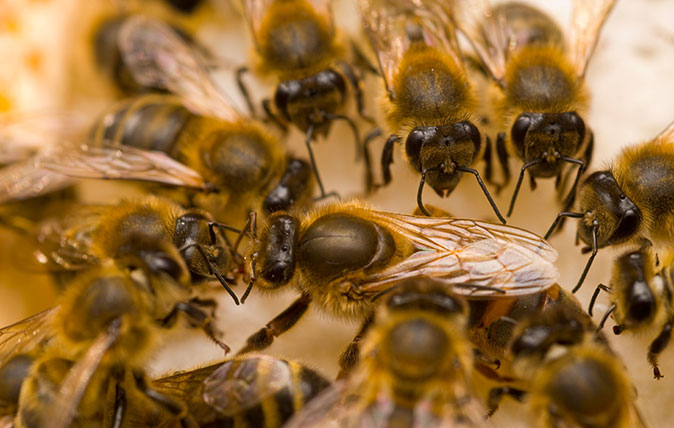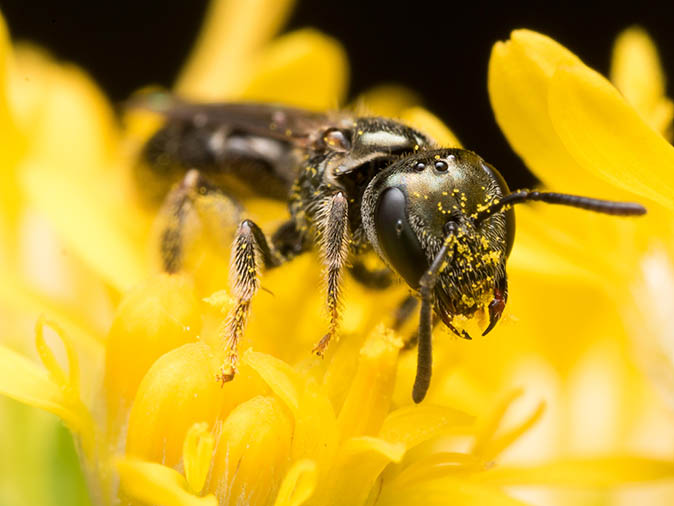Curious Questions: Which came first, the bee or the wasp? And why is the Queen Bee such a slapper?
The fascinating world of bees has long held broadcaster and journalist Bill Turnbull in thrall. He takes a look at three new books on this endlessly engrossing topic.


Having spent some time recently watching wasps invade and then devastate two of my beehives, I was aghast to discover from Buzz: The Nature and Necessity of Bees (Icon Books, £16.99) that my honey-gathering friends did, in fact, evolve from their mortal enemies.
It happened one day, squillions of years ago, when a (clearly very clever) wasp accidentally fed its young with nectar and worked out that it’s less hazardous to gather food from flowers rather than by attacking other insects. I just wish someone would tell the wasps who ripped through my hives and killed every bee inside.
That’s just the headline fact from Thor Hanson’s fascinating journey of discovery through the world of bees and the people who research them. There are 20,000 different species, apart from your average honey-gatherer – more than all the birds and mammals in the world combined. Buzz tells us the fascinating story of where they came from – and where they may end up, if we’re not very careful.
You’ll probably know by now that at least a third of everything we eat depends on their pollination skills, but Mr Hanson warns that 40% of all our pollinators are now endangered, thanks to what one expert calls the four Ps: parasites, poor nutrition, pesticides and pathogens. If they should disappear, so would a lot of our food – a point the author makes by taking apart a Big Mac with a pair of tweezers to see how much of it would be left if there were no bees to help the ingredients grow.
The answer? Not a lot.
It’s happening to a certain extent already. In some parts of China, the bees have been wiped out so badly that workers are hired to pollinate apple orchards by hand, using sticks topped with feathers or even cigarette filters.
For all that, Buzz is far from depressing. Ten years on from the catastrophic losses caused by colony collapse disorder, Mr Hanson visits an almond farm in California to see how bees – and life – are being brought back to what were otherwise sterile plantations by the introduction of hedgerows and strip planting. Thoroughly absorbing and entertaining, Buzz gives us hope, as long as we sit up and pay attention.
Exquisite houses, the beauty of Nature, and how to get the most from your life, straight to your inbox.

By contrast to this global perspective on the state of our pollinators, A Honeybee Heart Has Five Openings (Scribner, £14.99) starts right at the other end – from the bottom up.
When diving into the wonderful world of apiculture, most of us take the well-trodden route of signing up for lessons with our local association and taking it from there (lesson number one, by the way: you will get stung). Not the author Helen Jukes. First, she reads up on the history of beekeeping, studying in detail the works of pioneers, such as François Huber. She seems to devour more books before she gets started than most beekeepers read in a lifetime.
Then, and only then, does she get stuck in – with, of all things, a top-bar hive, the more natural, but much less user-friendly way of keeping bees. I had one for several years just for fun and never got a drop of honey off it.
Miss Jukes worries about her bees. Frets about them. Sits and watches them. She takes it very, very seriously. And, as we follow her progress through the year, she teaches us a lot about beekeeping. Her book is the story of a young woman, anxious and not very happy, bringing calm and fulfilment to her life through managing a hive. It’s a beekeeper’s version of H is for Hawk – and there’s nothing wrong with that.
With 50,000 bees in a hive, how do they make decisions? What exactly is honey? And why is the queen of a colony such a slapper? These and many other questions are answered by Jürgen Tautz and Diedrich Steen in The Honey Factory (Black Inc, £16.99).
Prof Tautz is a highly respected bee expert and his latest work shows how incredibly clever our little friends are. It might be a tad technical for the lay reader, but, if you know any beekeepers, it’ll make a brilliant Christmas present.
Country Life is unlike any other magazine: the only glossy weekly on the newsstand and the only magazine that has been guest-edited by His Majesty The King not once, but twice. It is a celebration of modern rural life and all its diverse joys and pleasures — that was first published in Queen Victoria's Diamond Jubilee year. Our eclectic mixture of witty and informative content — from the most up-to-date property news and commentary and a coveted glimpse inside some of the UK's best houses and gardens, to gardening, the arts and interior design, written by experts in their field — still cannot be found in print or online, anywhere else.
